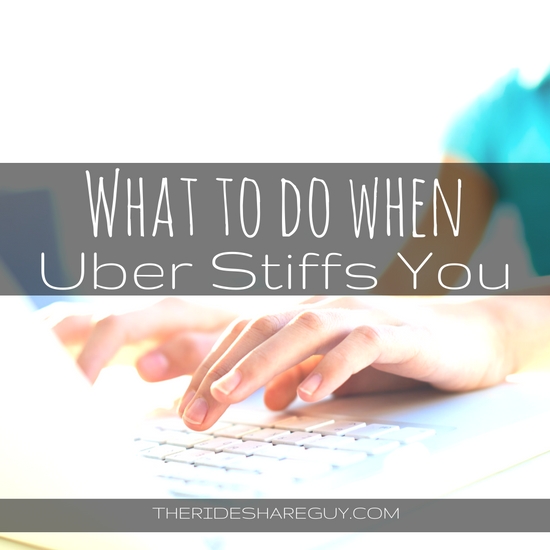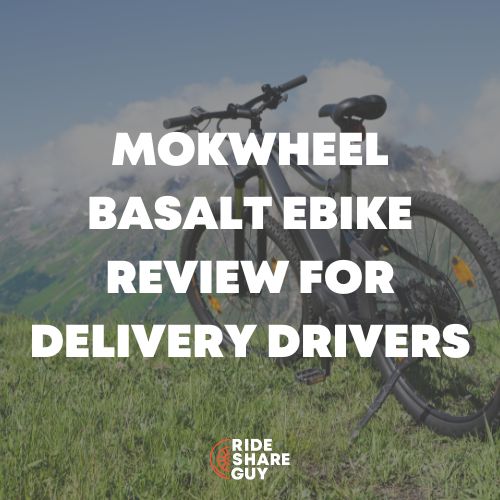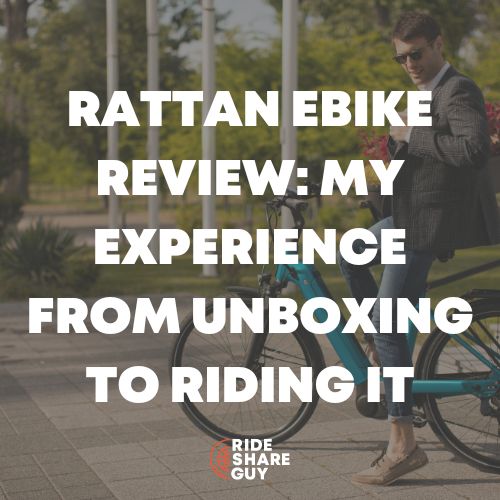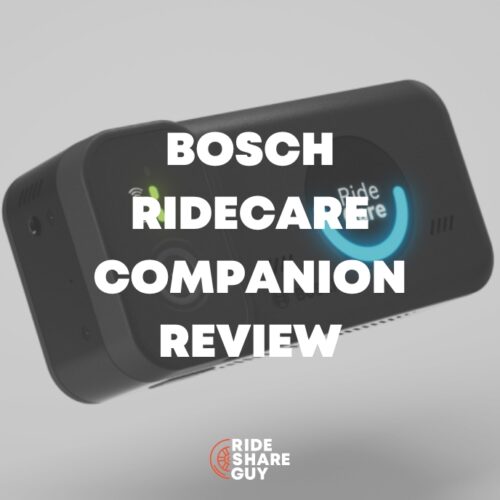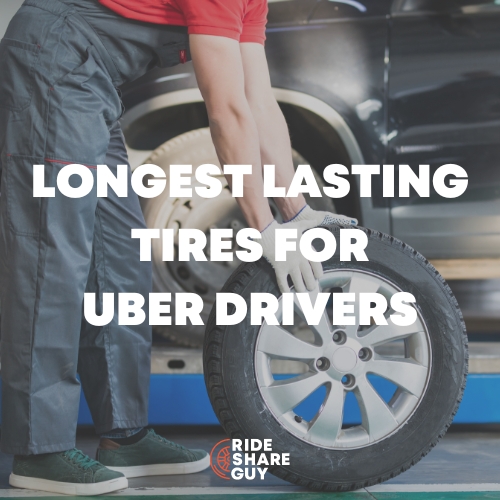Harry here. I think every driver has had their frustrations with Uber’s customer support, but when it comes to issues over your pay, that’s when things can get contentious.
I’ve experienced this myself numerous times with guaranteed pay and referral bonuses but today, RSG senior contributor John Ince recounts his recent experience dealing with customer support over his hard earned guaranteed pay that never showed up.
If you work on Uber hourly guarantees, Power Driver Bonuses (PDBs) or try to collect referral bonuses, chances are sooner or later you’re going to have some form of dispute with Uber over payments. When this happens, here’s what I’ve learned from dealing with it first-hand.
Lesson Number 1: Understand the Financial Context
Drivers now make less that one third they made per mile in 2014 in fares alone, which means more and more drivers are staying offline. Uber’s chess move: offer guarantees and power driver bonuses with terms attached that tether drivers to their jobs and offer the promise of greater pay.
Lesson Number 2: Understand Bonuses and Guarantees are a Zero Sum Game for Uber
Unlike regular fares where both the driver and Uber share income, with guarantees and bonuses, it’s a zero sum game. Simple math. But there have to be enough drivers getting guarantees to keep drivers out on the road.
Lesson Number 3: Either Prepare Yourself for Battle or Forget it Right Away
Uber’s strategy is fight by attrition. You might get lucky with a quick resolution but don’t count on it. Uber has the data. They know what percentage of guarantees they actually pay. They know that X percent of drivers will either fail to notice the shortfall or immediately accept Uber’s reasons for denial. Decide how important this is to you. If it’s important on either principle or amount, then fight to the end. If not, then let it go.
Lesson Number 4: Use Multiple Forms of Communication
Email is good because you can easily attach or forward notes. Anecdotal evidence on the message boards suggests that you’re likely to get a quicker response using the smartphone app. Uber’s phone number is nearly impossible to find and the help is sketchy there, so don’t get your hopes up on a phone call.
Related Article: Top 9 Ways to Contact Uber
The most effective approach is to go in person at Uber driver centers. But that’s a huge hassle. Because I find writing my natural form, I opted entirely for email exchanges. Sometime you get a reply within minutes, sometimes it can take days, which leads to the next step.
Lesson Number 5: Keep Communication Simple
Use short sentences and get to the point right away – ideally in the first sentence. Uber support staffers have a short attention span. Mention anything complex or conceptual and their brain freezes up. Include reference number and skip the diatribes. It’s okay to personalize and even dramatize your plight. Make it human and reasonable. Every now and then you get an intelligent human on their side, so you don’t want to miss that opportunity should it materialize.
Lesson Number 6: If You Don’t Like a Response from One Person, Try Someone Else
I learned this right at the outset of my Uber driving days. I was due a $500 sign on bonus, via a referral link from Harry. When I first inquired about how to get the bonus, Uber’s partner support said I wasn’t eligible for the bonus because too much time had lapsed from when I first contacted Uber. That went back and forth for several emails, each time with a denial. But I was still convinced I was right, so I went down to Uber’s office at 70 Vermont Street in San Francisco and the woman behind the desk approved the bonus on the spot.
Lesson Number 7: Document Everything You Can
To keep my acceptance rate near perfect, I watch my smartphone like a hawk when I’m on guarantee. Both Friday and Saturday, I was sure that I’d accepted all ride requests. But something very strange happened just before I signed off about 2 am. I had just dropped off my last fare, and tapped to go offline. That brought the popup, Are you sure you want to go offline? As I was tapping the, Yes, I’m sure button, a ride request flashed across my screen. It was visible only for milliseconds, disappearing too fast to accept. Concerned about this, I emailed Uber support as soon as I got home.
Thanks for getting back to me. I made absolutely sure that I accepted all ride requests between 5 PM Friday, July 15 and Saturday at 2 am. so that I would qualify for the hourly guarantee offer in my area. Please verify that I did accept all the ride requests that came to me between 5 PM Friday, July 15 and Saturday at 2 am.
Within ten minutes I got a reply from Uber, the one I wanted to hear.
Hi John,
No worries. Upon checking again your details, I can confirm that you have accepted all rides that come into you within the time frame that you have mentioned. Your acceptance rate for this time frame is 100%. I hope that I was able to clarify you on this. Please let me know if you have any other questions. Thank you.
Now I had documentary evidence. Now if they deny me, two different sources within Uber’s database will have come up with different figures for my acceptance rate. Insert your own conspiracy theory here.

Lesson Number 8: Research Your Situation
Uber People
, The Uber Driver Sub-Reddit and Facebook Groups all have a search box. I typed in acceptance rate and guarantees. Suddenly I realized that what happened to me was happening to a lot of others. The online message boards and Facebook groups are full of theories about Uber’s “phantom request.” Here’s a representative post:
Last Friday, I met my guarantee between 7 to 9 A.M., but when I looked at my updated earnings the following Tuesday Uber didn’t apply my guarantee for that day.
After many emails, in which they of course gave me the normal run around, they finally told me I didn’t qualify because my acceptance rating was a 78%. However, I was positive I didn’t miss a single request. I finally called and spoke with support … what the women told me was infuriating. Uber’s phone rep, after looking into my rides and that day’s acceptance rating, proceeded to tell me that sometimes “driver’s phones can have issues with their data” and those ride requests may bounce back before they even are received by the driver and are directed to another driver’s phone.
This means that these ride requests are being sent to our phones, BUT they’re not popping up on our screen AND Uber is counting them towards are acceptance ratings. Basically, they’re penalizing us for something that is out of our control, and not our fault.
Lesson Number 9: Accept the Reality and Deal With It
The following Tuesday when the pay statement came, I had been denied all five guarantees for the week. The weekend guarantees were denied because of what they said was acceptance rates of 89% and 84%. Weekdays my guarantees were denied on the basis of a screwy interpretation of the “one trip per hour” rule.
During the week, I drove the evening rush hour and got one trip request and completion in a little over an hour online. Here’s how they figure it: since I was online for 62 minutes and my trips per hour was .98, just short of the 1.00 trip per hour rule – guarantee denied. Similarly the other two days, I was 87% and 78%. What’s really strange about this is that you would think Uber would want to incentivize drivers to stay online longer, and give credit for one hour guarantee if you’re online at least an hour. Not so. Had I logged offline minutes earlier, I would have qualified. Very strange.
Lesson Number 10: Enjoy the Fight
My first response to these denials was short and to the point. I attached Uber support’s confirmation email of my 100% acceptance rate by Uber support. They continued to deny and conveniently avoided mention of their own 100% figure. The total at stake is about $130, which for me is a full night’s driving.
More important there was the principle. I’d earned it playing by the rules they established. Moreover, I’d altered my driving strategy around those rules. When I had trips into San Francisco, I ended the ride early and turned right around empty back to Marin because again 2/3 of the trips must begin in Marin. On two other occasions I got pings from outside the qualify region, but accepted and completed both, using up my allotment of trips outside the QR.
Lesson Number 11: Keep After Them
How long does it take to resend an email (Boomerang is a great tool for setting up reminders)? Maybe a few seconds. I spiced up my subsequent letters with stronger words. Even so they kept denying – finally one came with a big banner saying RESOLVED across the top. For most drivers, this is where they give up. But no, sorry this is not resolved.
Lesson Number 12: There is a Time to Bring Out the Big Guns
I don’t threaten to sue unless I mean it. So I went out for a long bike ride and considered how much of an inconvenience I was willing to endure in a small claims lawsuit. What were the potential rewards? There’s only $130 at stake, but I could sue for punitive damages of up to a total of $10,000. Punitive damages are difficult to approve in small claims unless there is good reason to punish the defendant for a pattern of repeated violations. I would need clear evidence that Uber was making a common practice of what they did to me. From my Web research, that sounded like an doable proposition. But would the judge accept the word of others who posted on the Internet? I’m not a lawyer. That’s the risk.
There were good reasons to proceed, but would I be willing to go court? I think so. What about this phantom request phenomenon? Is there any clear evidence that ghosts are inhabiting Uber’s system? Does Uber know about ghost requests? Is Uber actually tampering with acceptance rate statistics? Can it be proved? Because it happens so fast it’s nearly impossible to document. Without hard evidence, it’s impossible to mount a class action suit. Also, few lawyers would waste their time on this. But in small claims court you represent yourself, and can prepare your own case. Small claims court it is. So I send off the email with the heading: Pay me what I am due or face legal action!!!!
Lesson Number 13: Don’t Relax Until the Funds are in Your Bank Account
When Uber finally got back to me on this, they sent two conflicting emails. The first said they would credit me for $45 guarantee for Friday only. The second yielded on all points and said he would credit my account the full $131.43 due.
But guess what? The fight still wasn’t over. They only credited me $45 on my next pay statement. I followed up with half a dozen emails about this, and they finally got back to me saying they would credit my account the additional $80+ within 24-48 hours. Didn’t happen. They went through this charade twice, each time sending me a conciliatory letter saying the funds would be deposited and then not depositing the funds. Each time, when I tried to follow up by email, I got an automated reply saying the case was resolved and that they had not received my email.
Lesson Number 14: If All Else Fails, Send the Demand Letter
Before you can file a small claims lawsuit, you need to send the defendant a “demand letter” asking for payment. The demand letter is the sign that you’re serious about a lawsuit. There’s no magic formula. Just be sure to include the words, demand letter, the amount asked and a cutoff date for the demand. Within 24 hours of sending this demand letter, I finally saw the funds reported in my next statement.
In short, the funds were finally deposited in my bank account three weeks and several dozen emails later.
The Takeaway – If you want your money due, be prepared to fight for it. What remains unclear is whether this occasional struggle to get paid from Uber is an intentional strategy to win the war of attrition. I leave that up to conspiracy theorists.
It’s certainly plausible that it’s a product of confusion brought on by the sheer weight and volume of customer service requests that flow back to Uber. That in and of itself gives Uber the cover of plausible deniability. Yes, I’d wasted a lot of time fighting for what? I figure we exchanged close to forty emails on this matter over the course of three weeks. At that rate my yield was a little over $3 an email – close to the driver’s take for a minimum fare in the city. Yes, Uber’s support staff had succeeded, partially – by leaving an indelible imprint in my mind – and not a favorable one. But what did they gain? Drivers are not paid for this kind of fight. How much ill will is generated in this process? Difficult to know, but it sure seems to makes driving an increasingly untenable proposition, financially and psychologically.

What do you think Uber’s doing here? Is it confusion inside the support team, or something more intentional?
-John @ RSG
Save
Save
Save
Save
Save
